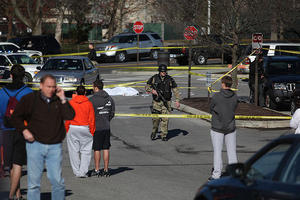Campus securityNew technology helps Virginia Tech avoid another massacre
Last week Virginia Tech officials made all the right decisions after a man killed a campus police officer, showcasing the valuable lessons it had learned following the 2007 Virginia Tech massacre that left thirty-two people dead and twenty-five injured

Lessons learned: VT responded within minutes to word of shooting // Source: roanoke.com
Last week Virginia Tech officials made all the right decisions after a man killed a campus police officer, showcasing the valuable lessons it had learned following the 2007 Virginia Tech massacre that left thirty-two people dead and twenty-five injured.
Rather than waiting several hours to alert students and lock down the campus like it did in 2007, campus officials issued an alert seven minutes after they learned that a man had shot and killed a campus police officer.
Law enforcement officials immediately began an intensive search and found a second body less than a mile from the first. The second victim was killed using the same gun and police believe it was the shooter himself committing suicide.
“It was a rapid and effective response to the incident itself,” said Christopher Blake, the associate director of the International Association of Campus Law Enforcement Association. “There seems to be a very effective effort to keep the community informed.”
Larry Hincker, the associate vice president for university relations at Virginia Tech, credited new technology installed after the 2007 incident for the swift response. With the university’s new communications system, a dispatcher can trigger an alert that automatically sends text messages to cell phones, updates Twitter, e-mails students, and posts notices on 5,000 digital message boards across campus.
According to Blake, a layered communications system is critical as students are highly mobile and often in class where they may not have access to a computer or email.
Some students don’t even use e-mail, they text…. They’re very mobile, they use mobile technology, so there has to be a mix of communication,” he said.
Roughly thirty-five campus officials have access to the system which can also be used for other emergencies like tornadoes, natural disasters, or fires.
In addition, following the 2007 shooting, school officials across the country have been more proactive in reaching out to students who appear troubled.
Chuck Williams, the director of the Center for the Prevention of School-Aged Violence at Drexel University, said prevention efforts should not be viewed as criminal matters but rather as a public health issue.
As evidence of the success of this approach, Williams pointed to a recent incident in Tampa, Florida where a teenager was found with bomb-making materials in his home and a manifesto outlining his plans to kill two school officials and thirty students on the first day of high school.
Police say they uncovered the plot because other teenagers recognized that the student had been acting abnormally.
“When we hear more stories about thwarted attacks, we know we are getting somewhere,” Williams said.
